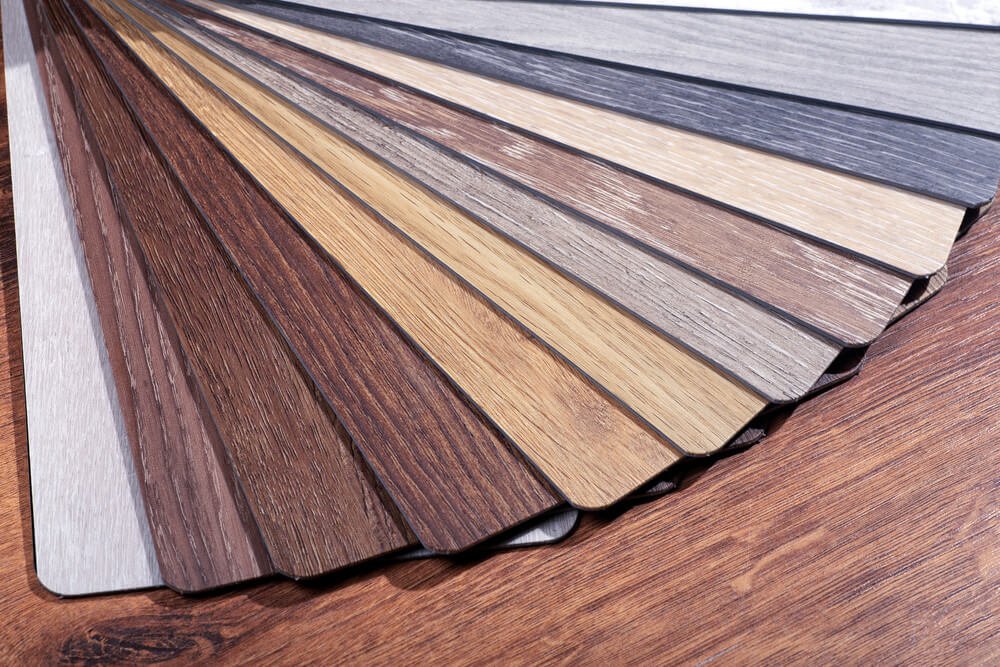Vinyl and linoleum floors have a lot in common, but there are also many differences between these two types of resilient flooring. Let’s explore what sets these options apart and how they can both fit into your design plans.
Linoleum Flooring
Let’s face it—linoleum has a bad rap in the flooring game. Practically every kitchen in America has had a run-in with tacky ‘90s aesthetics, and linoleum floors with dated designs reigned supreme. As the home decor/renovation boom hit in the 2000s, linoleum became a joke among many fashionable designers. But we can’t discount linoleum just because its designs didn’t age well. Modern linoleum is an excellent choice for flooring in a number of settings, from the kitchen to the living room and even in commercial settings. One major perk of linoleum is part of why it became so disliked in the first place: it can last a long time. It’s called resilient flooring for a reason, after all. Linoleum flooring can stand up to great deals of abuse and wear and tear without taking damage, and it’s incredibly easy to replace a tile if damage does occur. This makes linoleum a perfect choice for kitchens and entryways where high traffic is a constant.
Vinyl Flooring
Vinyl flooring has seen a rise in popularity in recent years and for good reason. Luxury vinyl tiles are the chameleons of the floor industry, easily matching patterns like wood and tile that are far more costly. Vinyl can be installed with relative ease, making it a quick option for a busy homeowner. When installed properly, vinyl flooring is waterproof and comfortable to walk on as well, making it a great option for kitchens and commercial settings.
The Resilient Flooring Debate: The Bottom Line
You’d be forgiven for wondering: are linoleum and vinyl the same? While they are both popular types of resilient flooring, they have quite a few differences. Here are some of the things that set these two options apart.
The first major difference is the thickness of the material. Linoleum is generally thinner than vinyl flooring when it comes in sheet form. Sheet linoleum is one large, uniform piece of flooring that can be expertly cut and installed in a room. Since it’s one cohesive piece, it doesn’t need to be as thick as the other types of flooring to be as durable. Most linoleum is usually applied with an adhesive, especially when installed as a sheet. However, like vinyl, linoleum does come in plank and tile form now, and it’s even adopted the click-and-lock style that vinyl popularized.
Another major difference between these kinds of flooring is their ability to resist water. Vinyl floors are completely waterproof when installed by a professional. Linoleum flooring, however, can be damaged by standing water. Usually, linoleum floors are discolored. While they are still popular in kitchens, this might be a dealbreaker for many looking for a waterproof kitchen floor. On the other hand, when it comes to lifespan, linoleum is generally the winner. Linoleum and vinyl flooring can last a long time, with the former lasting 20-40 years and the latter surviving 10-20 years before requiring replacement. There are factors that can cause both to require replacement earlier, and linoleum is susceptible to water and sun damage if not properly cared for.
So, when you’re debating linoleum vs. vinyl flooring, which is the best option for your home or commercial space? The bottom line is this: each type of flooring can suit your unique needs, but you need to consult with the pros to determine what’s right for you. If you’re ready to learn more and make a decision, give us a call at Ozburn-Hessey for a free consultation and estimate for your resilient flooring.

